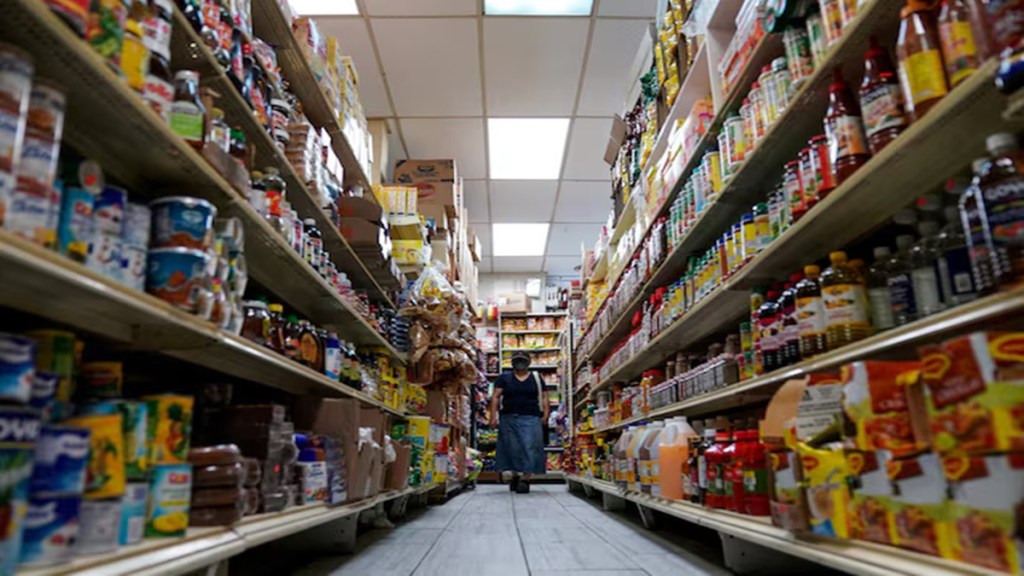Household consumption of daily groceries, home and personal care items slowed in the twelve months ending May 2025 versus the previous year, market researcher Numerator (formerly Kantar) said on Thursday. But the good news is that a revival is around the corner by the December quarter or the second half of the current financial year, the agency said, driven by favourable macro-economic factors.
“The last (December) quarter should begin to see a reversal in the drop in FMCG growth rates,” K Ramakrishnan, MD, South Asia, Worldpanel by Numerator, said. “For now, urban areas continue to lead rural in terms of growth rates, but the trend could change by the end of the year,” he said.
Worldpanel data shared by Numerator shows that both overall FMCG volume and value growth (excluding wheat) slowed to levels of 4% and 7.9% each in MAT May 2025 versus the previous year. In MAT May 2024, overall volume and value growth stood at 6.2% and 8.3% each. MAT refers to the moving annual total over 12 months ending May 2024 and May 2025 respectively. Overall is urban plus rural growth across India.
Urban vs. Rural: A Sharper Slowdown in Rural India
Within urban and rural areas too, Numerator says that a slowdown is visible in FMCG. However, it is sharper in rural areas versus urban from a volume growth lens. For instance, FMCG volume growth in urban areas has fallen to levels of 4.5% in MAT May 2025 from 6.3% reported a year ago. Rural FMCG volume growth in the said period, in contrast, has halved to 3.6% versus 6.1% reported a year ago. Value growth for both rural and urban areas, meanwhile, has declined marginally. It fell to 8.5% in MAT May 2025 versus 8.7% seen a year ago in urban areas. While rural FMCG value growth fell to 7.3% versus 7.9% reported in the previous year.
From a category lens, Numerator says that the drop in household consumption of food and beverage (F&B) items excluding wheat has been sharper than home and personal care products in the said period. This is visible in volume growth numbers for MAT May 2025 versus the previous year, the agency said, with F&B volume growth falling to levels of 4.1% versus 7% reported a year ago. Both personal care and home care volume growth, meanwhile, have seen a marginal drop to levels of 4.3% and 3.6% each in the said year versus 4.7% and 3.8% reported a year ago.
Evolving Consumer Behavior and Aspirations
Numerator also indicates that consumer cohorts or clusters within urban and rural areas are showing disparate consumption trends, with the affluent class gravitating towards convenience and experience. While the urban middle class is upgrading to new formats, the masses including metro and non-metro consumers are being value-conscious.
The rural consumer, whether mass or elite, on the other hand, is increasingly becoming aspirational, Numerator said, with the penetration of categories beyond essentials such as fabric softeners, washing liquids, sauces, ketchups, juice drinks, instant noodles, insecticides, western snacks and sanitary napkins growing sharply (in four years), though consumption remains in small pack sizes.
Ramakrishnan said that the preference for brands of large, listed players remains stronger in rural areas versus urban areas, where consumption of small brands has been on the rise owing to down trading.
Also, incremental volume growth seen in out-of-home consumption in urban areas in MAT May 2025, Numerator said, has been driven by new launches in food and beverages. Here, soft drink makers, salty snacks and chocolate companies have taken the lead, with as much as two times the number of launches seen in the said period versus last year. Biscuit makers, in contrast, have been laggards, it said.

